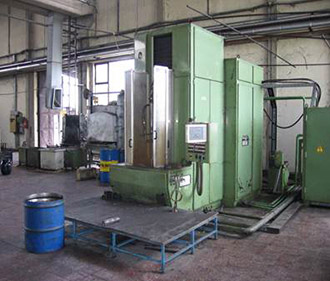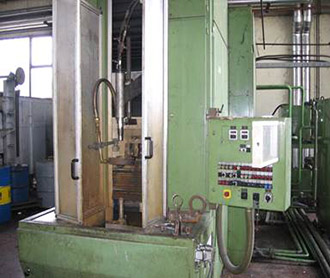Induction Hardening
Induction hardening is the most widely used method of surface hardening, due to its high productivity and good quality of the hardened layer.
Inducing heath by a high frequency current is based on the so-called "skin effect". The surface layers of the steel objects are heated rapidly to a high temperature, while the inner layers remain cold or, due to the thermal conductivity of steel, slightly heated.
The maximum hardness reached by induction hardening is increased by 2-3 HRC units compared to the hardness obtained by the conventional heating (in a furnace), and cooling performed in the same medium. The other mechanical properties (tensile strength, yield strength, elongation, contraction and impact strength) also show higher values after induction hardening, compared to a conventional one.
Other advantages of induction hardening compared to conventional hardening are:
- Lower energy consumption;
- High productivity;
- The possibility to use mechanization in the process;
- High quality hardened steel (possibility of replacing alloyed by carbon steels);
- Absence of oxidation and decarburization;
- Small deformation.
Induction hardening is applied in cases of a large number of objects, such as gears, crank shafts, turbine blades, rollers for rolling mills, gauges, tools that work under the influence of shock loads and the like.
PPT-TMO S.A. has two induction-type FDF appliances, max power 150KW, for hardening objects with the maximum diameter 250mm and max length 1250mm.
 |
 |

 Srpski
Srpski